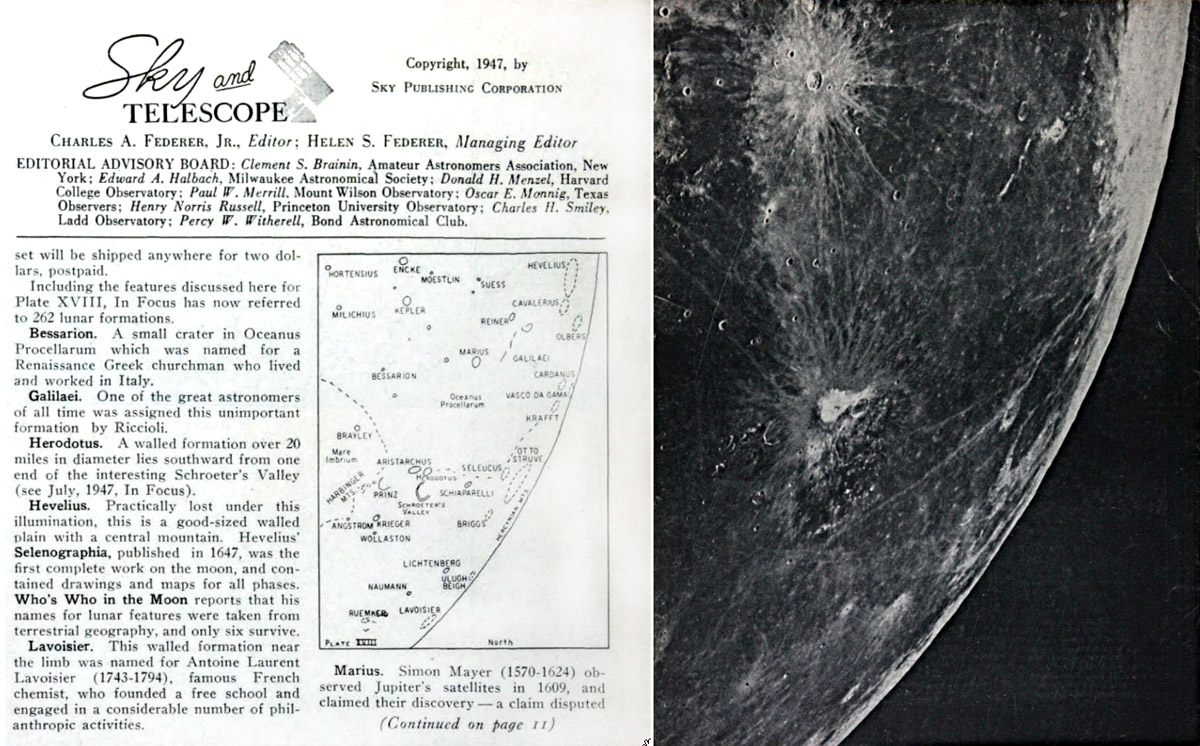Difference between revisions of "June 23, 2013"
| Line 3: | Line 3: | ||
<!-- ws:start:WikiTextHeadingRule:0:<h1> --> | <!-- ws:start:WikiTextHeadingRule:0:<h1> --> | ||
<!-- ws:start:WikiTextLocalImageRule:6:<img src="/file/view/LPOD-Jun23-13.jpg/439219000/LPOD-Jun23-13.jpg" alt="" title="" /> -->[[File:LPOD-Jun23-13.jpg|LPOD-Jun23-13.jpg]]<!-- ws:end:WikiTextLocalImageRule:6 --><br /> | <!-- ws:start:WikiTextLocalImageRule:6:<img src="/file/view/LPOD-Jun23-13.jpg/439219000/LPOD-Jun23-13.jpg" alt="" title="" /> -->[[File:LPOD-Jun23-13.jpg|LPOD-Jun23-13.jpg]]<!-- ws:end:WikiTextLocalImageRule:6 --><br /> | ||
| − | <em>images from Sept, 1947 Sky & Telescope (from [http://www.shopatsky.com/category/sale-clearance/?m=topnav_saleclearance | + | <em>images from Sept, 1947 Sky & Telescope (from [http://www.shopatsky.com/category/sale-clearance/?m=topnav_saleclearance The Complete Sky & Telescope DVD set)]</em><br /> |
<br /> | <br /> | ||
Following World War 2 an interest in astronomy gradually returned. <em>Sky & Telescope</em> helped promote a rebirth in interest in the Moon<br /> | Following World War 2 an interest in astronomy gradually returned. <em>Sky & Telescope</em> helped promote a rebirth in interest in the Moon<br /> | ||
by printing lunar photographs on the back covers of the magazine in 1946 and 1947. They divided the famous Lick Observatory first<br /> | by printing lunar photographs on the back covers of the magazine in 1946 and 1947. They divided the famous Lick Observatory first<br /> | ||
| − | and [http://www.galaxypix.com/solarsys/moon/Phases/mof2_5211_gal.jpg | + | and [http://www.galaxypix.com/solarsys/moon/Phases/mof2_5211_gal.jpg last] quarter photos into 18 sections, and the accompanying <em>In Focus</em> column on the inside front cover provided a small chart to<br /> |
identify features, and a 15-20 word description of prominent features. At the end of the series in September, 1947, <em>S&T</em> announced<br /> | identify features, and a 15-20 word description of prominent features. At the end of the series in September, 1947, <em>S&T</em> announced<br /> | ||
that all 18 photos and the key maps had been reprinted on 12 x 19" sheets of paper and were for sale for two dollars, postpaid. If <em>S&T</em><br /> | that all 18 photos and the key maps had been reprinted on 12 x 19" sheets of paper and were for sale for two dollars, postpaid. If <em>S&T</em><br /> | ||
| Line 17: | Line 17: | ||
the basic geology of the Moon for they are what Baldwin and Shoemaker used in 1949 and 1959 to establish modern lunar science.<br /> | the basic geology of the Moon for they are what Baldwin and Shoemaker used in 1949 and 1959 to establish modern lunar science.<br /> | ||
<br /> | <br /> | ||
| − | <em>[mailto:tychocrater@yahoo.com | + | <em>[mailto:tychocrater@yahoo.com Chuck Wood]</em><br /> |
<em>I thank Bill Hartmann for giving me a set of these S&T lunar photos from the 1940s!</em><br /> | <em>I thank Bill Hartmann for giving me a set of these S&T lunar photos from the 1940s!</em><br /> | ||
<br /> | <br /> | ||
<hr /> | <hr /> | ||
Revision as of 17:05, 11 January 2015
The Moon in Focus

images from Sept, 1947 Sky & Telescope (from The Complete Sky & Telescope DVD set)
Following World War 2 an interest in astronomy gradually returned. Sky & Telescope helped promote a rebirth in interest in the Moon
by printing lunar photographs on the back covers of the magazine in 1946 and 1947. They divided the famous Lick Observatory first
and last quarter photos into 18 sections, and the accompanying In Focus column on the inside front cover provided a small chart to
identify features, and a 15-20 word description of prominent features. At the end of the series in September, 1947, S&T announced
that all 18 photos and the key maps had been reprinted on 12 x 19" sheets of paper and were for sale for two dollars, postpaid. If S&T
had published this collection as a thin book, including the descriptions, it would have become an immediate success and inspiration
for lunar observers. At the time the only available photographic lunar atlas was Pickering's low quality one from 1903; and Goodacre's
privately published 1931 The Moon was the best available map and description. In looking back at these images it is remarkable how
bad some of them are! With modern technology higher quality images are being taken by LPOD contributors with 3" and 4" aperture
telescopes. I could argue however, that these Lick images (and somewhat better ones from Mt Wilson) really were adequate to deduce
the basic geology of the Moon for they are what Baldwin and Shoemaker used in 1949 and 1959 to establish modern lunar science.
Chuck Wood
I thank Bill Hartmann for giving me a set of these S&T lunar photos from the 1940s!



